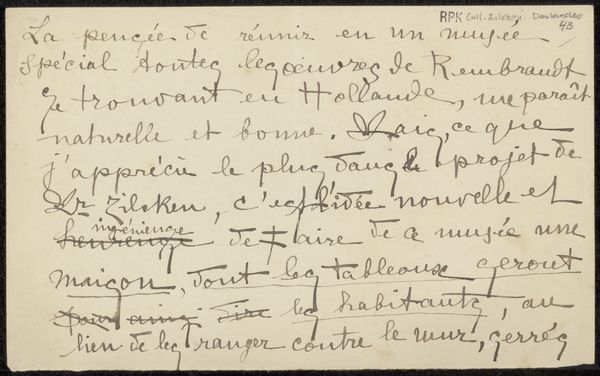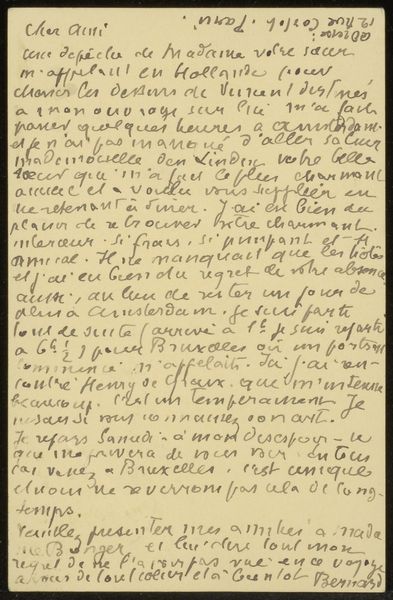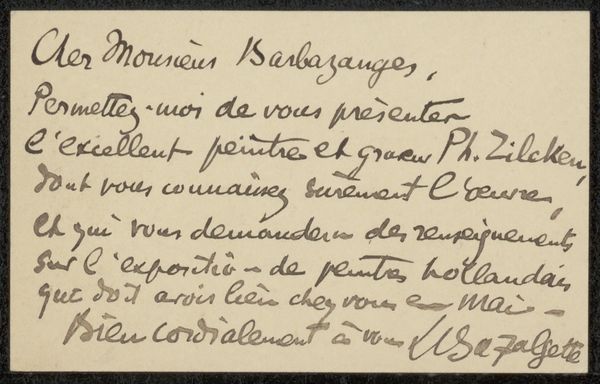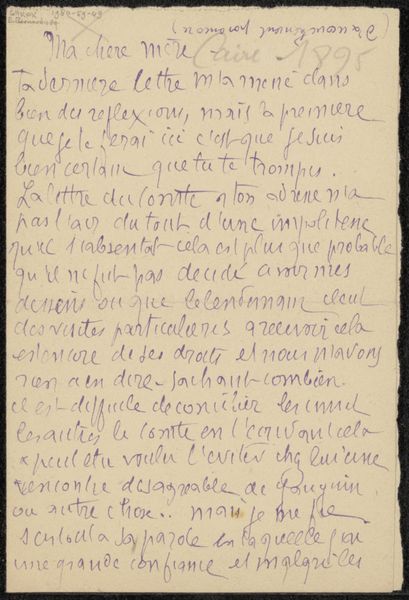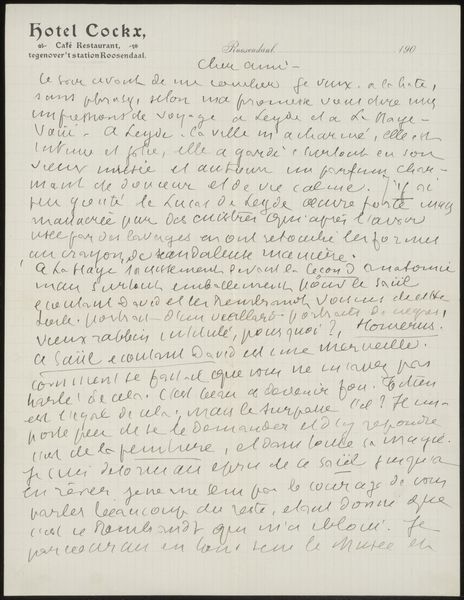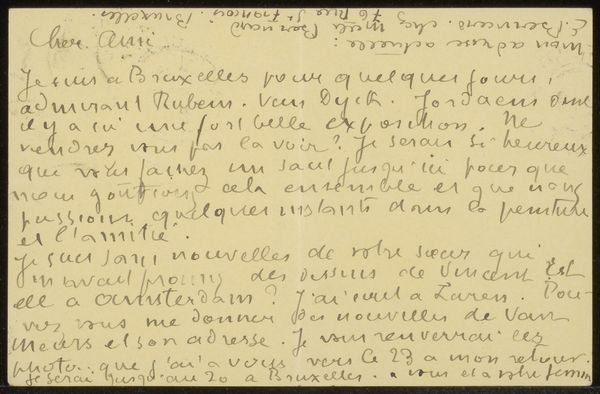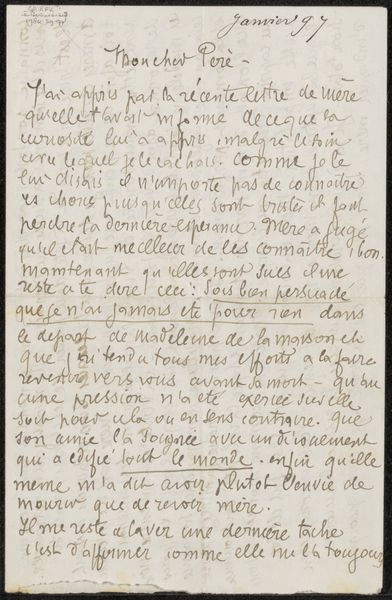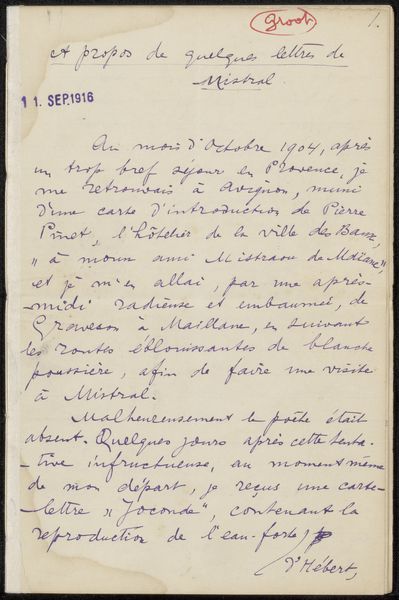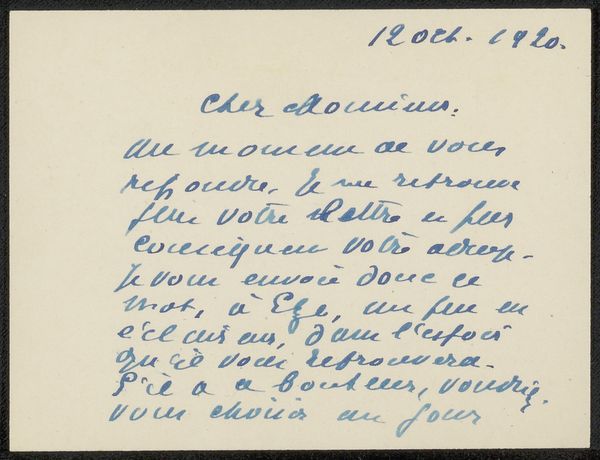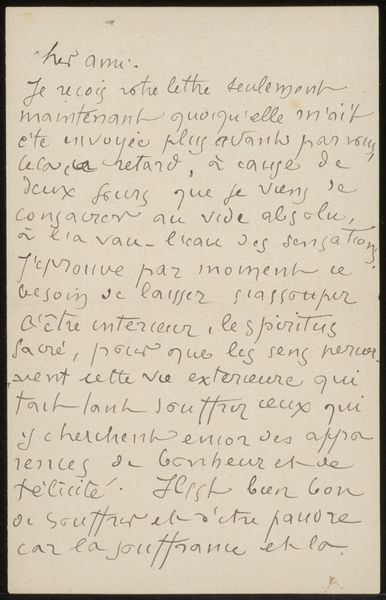
Copyright: Rijks Museum: Open Domain
Curator: This is a fascinating artifact. It's a postcard from Emile Bernard to Andries Bonger, dated before 1909. It's ink on paper, a simple drawing but dense with text. Editor: My initial reaction is one of intrigue. The cramped, almost frantic handwriting gives a sense of urgency, like we're peering into a private conversation or maybe even a negotiation of some kind. The strokes of the pen show the hurried pace of its creator, it feels as though this was penned at speed, a list for errands to be run and tasks completed. Curator: Precisely. Observe the meticulous detail, though. While the script is hurried, the construction of each letter and the overall composition on the small rectangle adheres to certain graphic conventions. There is evidence in the mark-making that implies awareness, not indifference, to structure. Note too how some numbers, and isolated text fragments are boxed, as though Bernard intends to highlight their relevance or their priority. Editor: I see it as indicative of the material constraints that were likely inherent at this point in Bernard’s life. Consider what paper, ink, and the postal service would have signified—not just as mundane materials and labour for conveying thoughts, but as key infrastructures which were part of supporting an entire system of artistic distribution and exchange. These limitations shape not only what information could be physically sent but also how freely communication could flow between artistic communities at a moment without any kind of social media. Curator: I can see that. But what also emerges, independent of this context, are specific stylistic choices – elements that constitute the internal logic of the work itself. See, for instance, the relationship between text weight and whitespace and how those qualities generate visual hierarchy. What, though, does the intersection of Impressionism, and Post-Impressionism reflected in this single object really imply about art in that transitional time period? It seems Bernard's commitment to lettering style transforms the functional purpose into artistic merit. Editor: Agreed. However, seeing the artist's touch also pulls back the curtain somewhat, revealing the actual circumstances of creation, with consideration for not just how art communicates conceptually, but materially and socially within a given environment and culture. I think looking into these contexts helps to destabilize common assumptions regarding artistic inspiration, and forces engagement with those circumstances impacting any creator at any moment. Curator: Ultimately, approaching Bernard’s letter through a Formalist lens enables deeper engagement with both the technical components that drive its artistry, in parallel to Materialist interpretations connecting his artistic project and labor with contextual awareness. Editor: Indeed. By focusing our investigation in this way we see more than the object but an echo chamber revealing a glimpse of daily operations within the nineteenth century.
Comments
No comments
Be the first to comment and join the conversation on the ultimate creative platform.

